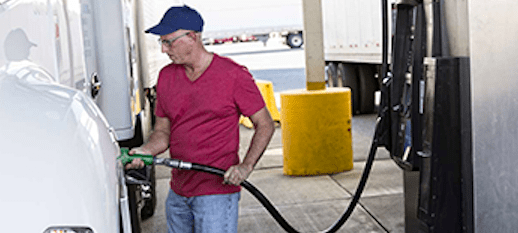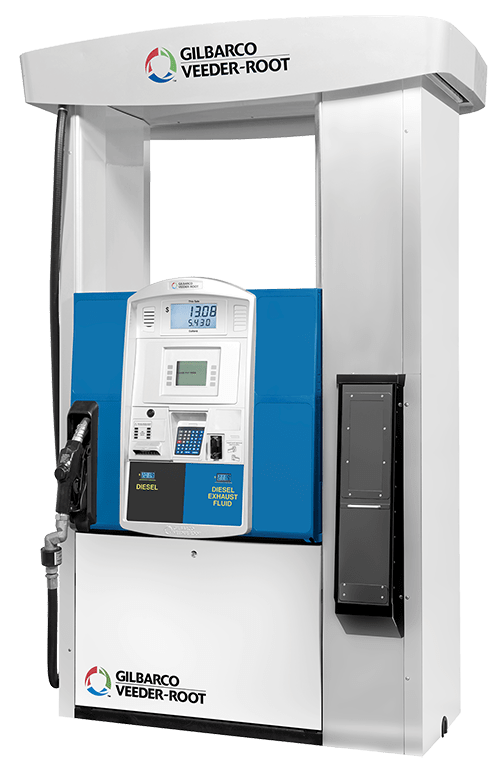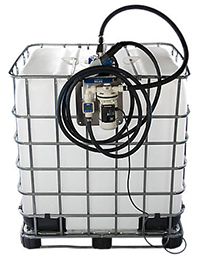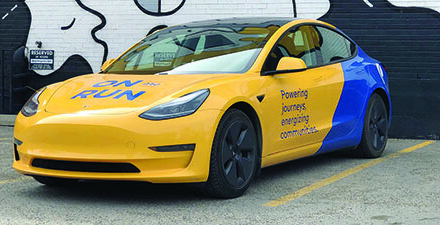
Diesel Vehicle Design Standardization Updates Create New Opportunities for Fuel Retailers

By Danny Seals and Joseph Leonard
Updates to diesel truck design could create new strategic opportunities for stations offering diesel fuel.
Vehicle manufacturers are now standardizing the location of diesel exhaust fuel (DEF) fill necks, the spout where a driver inserts the nozzle to refill a DEF tank. Before, DEF tanks could be located anywhere on the vehicle. Some DEF fill necks were placed inconveniently under the hood of the truck.
It may sound like a small design change, but it opens an exciting new method to draw in more diesel customers and create a new level of loyalty on side and back courts.
What the DEF?
 DEF is a requirement for medium and heavy-duty vehicles with diesel engines produced after 2010. These vehicles are programed to inject the DEF into the exhaust stream to meet emissions requireme nts. The DEF helps convert NOx fumes into harmless nitrogen and water. If the vehicle is allowed to run out of DEF, engine performance will be reduced, and lower speeds are imposed.
DEF is a requirement for medium and heavy-duty vehicles with diesel engines produced after 2010. These vehicles are programed to inject the DEF into the exhaust stream to meet emissions requireme nts. The DEF helps convert NOx fumes into harmless nitrogen and water. If the vehicle is allowed to run out of DEF, engine performance will be reduced, and lower speeds are imposed.
DEF can be purchased in several ways. There are varying sizes of containers or jugs that a driver can purchase. This requires the driver to transfer the DEF into the vehicle manually. DEF can also be dispensed into the vehicle through a fueling dispenser.
So, why does the location of the DEF tank on a vehicle matter to fuel retailers? Because it allows you to provide even more convenience and create loyalty with your diesel customer base.
 Carrying a jug of DEF around inside the vehicle is not an ideal consumer experience. But what if they could simply get fuel and DEF directly from the same dispenser without moving the vehicle? Now that the DEF and diesel tanks are next to each other on the vehicle, it makes perfect sense for retailers to offer DEF and diesel fuel from the same fueling position – creating a one-stop-shop experience.
Carrying a jug of DEF around inside the vehicle is not an ideal consumer experience. But what if they could simply get fuel and DEF directly from the same dispenser without moving the vehicle? Now that the DEF and diesel tanks are next to each other on the vehicle, it makes perfect sense for retailers to offer DEF and diesel fuel from the same fueling position – creating a one-stop-shop experience.
DEFinite Advantage
DEF is a great product for all c-stores to offer as there is a large population of diesel vehicles on the road. Retailers that sell diesel at their fueling locations can use the volume sold as an indicator for whether DEF dispensers would be a smart play.
If your site has side or back courts, DEF dispensers can be a game changer as they provide greater margins for DEF purchased in bulk. Locations selling large amounts of diesel on the forecourt should consider a DEF dispenser solution as well.
Going Underground
All things considered, a fixed tank is the most efficient storage method for diesel exhaust fluid, but there are other solid reasons to go underground with DEF. Installing DEF underground storage tanks incur a one-time cost, but they also unlock wholesale prices which ultimately offsets initial costs as the demand for DEF rises. And yes, demand is rising. The percentage of DEF pumps in the overall automotive DEF supply mode increased from 14 per cent in 2011 to 40 per cent in 2019, according to market research firm Reportlinker. This is due to more stringent environmental regulations and the manufacturing of new DEF-compatible vehicles that are replacing the old ones.
Keeping DEF underground allows retailers to better manage supply and be more strategic with DEF buying habits. Business owners can also have the confidence that they will not run out of DEF because these tanks can be monitored with an automatic tank gauge like Veeder-Root’s TLS-450PLUS.
DEF Quality
Diesel exhaust fluid is highly sensitive to temperature, light, and moisture – and it freezes. For those reasons, the best way to ensure DEF purity is to store it underground away from changing environments.
Under the right conditions, DEF can have a shelf life of up to two years. When locations sell DEF in jugs or from outdoor pallets, they are not ensuring that their customers get quality DEF product. Locations that experience extreme temperatures are highly recommended to use underground tanks to store DEF.
 What Retailers Need – Above Ground Equipment
What Retailers Need – Above Ground Equipment
Dispensing diesel exhaust fluid requires some special equipment. Retailers will need heated DEF cabinets to keep the fluid from freezing, as this fluid is highly sensitive. For retailers with Gilbarco’s Encore 700 S fuel dispensers or Ultra Hi-Flow dispensers, the cabinet can be simply added to either side of the existing dispenser.
What Retailers Need – Below Ground Equipment
Underground, you’ll need a DEF storage tank, an automatic tank gauge, and a CoreDEF Submersible Turbine Pump which pressurizes the DEF hydraulic system to feed the fluid to the dispensers. A Mag Probe is suggested to measure DEF volume and allow communication with the automatic tank gauge. Because DEF has corrosive elements, an ISO chem kit is also suggested to protect equipment.
For sites with temperature concerns that also expect low DEF demand, DEF recirculation can be used to protect the product. To do that, the TLS-450PLUS constantly monitors fluid temperature. If DEF line temperature drops below the set threshold, the TLS will activate the CoreDEF STP and circulate the cold product from the lines back into the UST to prevent freezing. The system then resupplies the line with warmer product from underground
The Bottom Line
From convenience, to loyalty, to quality, there are many reasons why fuel retailers should offer DEF and store it underground. When drivers know they can consistently rely on a location for quality and convenient diesel exhaust fluid, they become return customers, rather than one-and-done guests.
Danny Seals is the product marketing manager of forecourt solutions for Gilbarco Veeder-Root. Danny has devoted the last 15 years to helping build products that millions rely on to keep the world moving.
Joseph Leonard is the channel manager for Veeder-Root. Joseph is focused on delivering best-in-class fuel management and monitoring solutions for the petroleum industry.


































